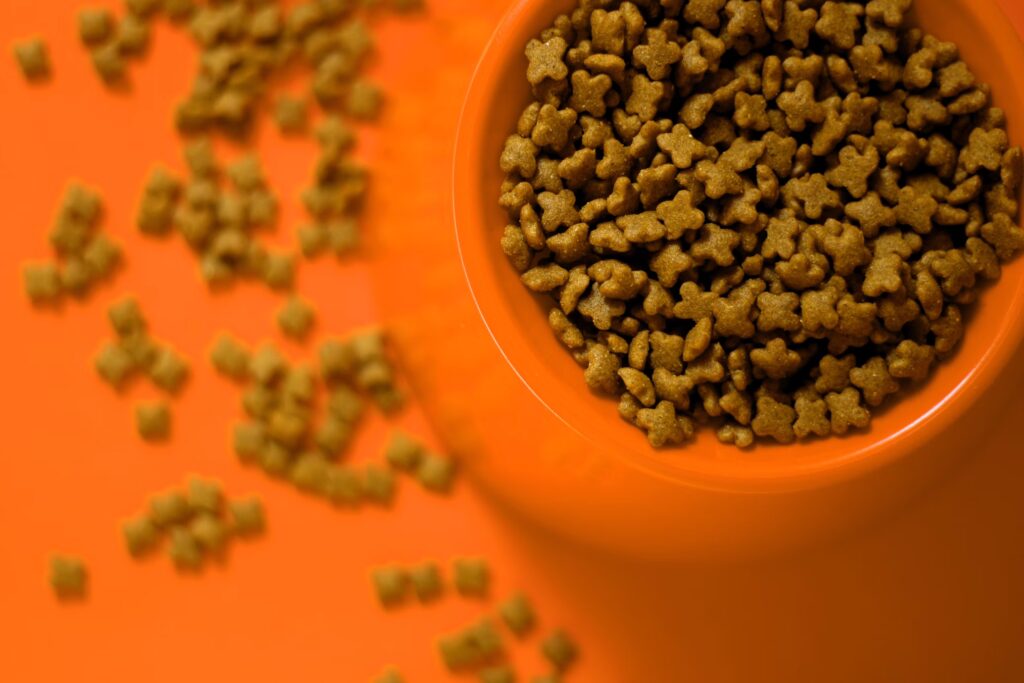Does your pet scratch, lick their paws, or have tummy troubles? These are symptoms of food allergies in dogs. As pet parents, we know seeing your dog in pain is hard, but don’t worry, things will get better!
It is important to learn how to manage dog food allergies to ensure optimal health and happiness for your pet. With the correct level of knowledge and the right products, it’s possible to ensure your furry friend lives a comfortable, itch-free life. In this comprehensive guide, we’ll discuss everything you need to know about the best dog food for allergies; recognizing the harmful ingredients and finding hypoallergenic brands.
Are you ready to start working towards achieving an allergy-free and happy pup? This time, we will begin from identifying food allergies in dogs and the different components that make dog food hypoallergenic, before going into detail on the best brands of dog food for allergy-sensitive dogs.
After this, we will walk you through the process of switching to an allergy-friendly diet, helpful dietary supplements, and even how to help your furry friend live in an allergy-free environment.
Understanding Dog Food Allergies
When it comes to dog food allergies, certain ingredients are more likely to trigger reactions. Here’s a list of the most common allergens found in dog food:
| Allergen | Prevalence | Alternative Ingredients |
| Beef | High | Venison, Rabbit, Duck |
| Dairy | High | Coconut Milk, Goat Milk |
| Wheat | Moderate | Rice, Quinoa, Oats |
| Eggs | Low | Pea Protein, Lentils |
What Are the Symptoms of Food Allergies in Dogs?
Food allergies in dogs can manifest in various ways, often affecting the skin and digestive system. Common symptoms include:
- Itchy skin, especially around the face, paws, and ears
- Recurrent ear infections
- Gastrointestinal issues (vomiting, diarrhea)
- Excessive licking or chewing of paws
- Hair loss or hot spots
- Chronic skin infections
Common Food Allergens for Dogs

Certain ingredients are more likely to cause allergic reactions in dogs. These include:
- Beef
- Chicken
- Dairy
- Eggs
- Wheat
- Soy
- Corn
Ironically, many of these ingredients are common in commercial dog foods, which makes it tricky to point out the exact allergen without a systematic approach.
What Are the Best Types of Hypoallergenic Dog Food?
When dealing with food allergies, switching to hypoallergenic or specialized dog food is often the most effective solution. Here are the most common types:
1. Limited Ingredient Diets (LID)
Limited ingredient diets are designed to reduce the number of potential allergens. These foods typically include:
- A single protein source (e.g., lamb, duck, or salmon)
- A simple carbohydrate source (e.g., sweet potatoes or peas)
- No artificial additives or preservatives
These diets make it easier to identify which ingredients your dog is reacting to and are often the first step in an elimination diet.
2. Novel Protein Diets
Novel protein diets use protein sources that your dog likely hasn’t encountered before. This could include:
- Venison
- Rabbit
- Kangaroo
- Bison
- Alligator
Because your dog’s immune system hasn’t developed a sensitivity to these proteins, they are less likely to trigger an allergic response.
3. Hydrolyzed Protein Diets
In these veterinary-prescribed diets, proteins are broken down into smaller components (amino acids) that the immune system doesn’t recognize as allergens. These are typically used in severe allergy cases or when an elimination diet has not identified a specific allergen.
4. Grain-Free Diets
Though grains aren’t a problem for all dogs, some suffer from grain sensitivities. Grain-free diets exclude common grains like wheat, corn, and soy, and instead use alternatives such as:
- Brown rice
- Quinoa
- Lentils
- Chickpeas
- Sweet potatoes
Note: While grain-free diets are sometimes beneficial, they’re not always necessary unless a specific grain allergy is identified.
Key Ingredients to Look For in Allergy-Friendly Dog Food

When shopping for allergy-friendly dog food, you should aim for products with the following characteristics:
- Single-source protein: Lessens the chance of an allergic reaction.
- Insect-based dog food– Hypoallergic, rich in proteins & vitamins
- Easily digestible carbohydrates: Sweet potatoes, rice, or oats are gentle on the stomach.
- Omega-3 fatty acids: From fish oil or flaxseed, to reduce inflammation and support skin health.
- Probiotics: Help maintain gut health and support digestion.
- No artificial preservatives, colors, or flavors
Avoid foods with vague terms like “meat meal” or “animal by-product,” which often contain mixed and unidentified proteins that may trigger allergies.
Recommended Dog Food Brands for Allergies
Finding the right brand of dog food is essential when managing food allergies. The best hypoallergenic dog foods focus on limited ingredients, high-quality proteins, and allergen-free formulations. Below are some of the most trusted and highly recommended brands, with specific product lines tailored for dogs with food sensitivities:
1. Hill’s Prescription Diet – z/d
- Type: Hydrolyzed & Novel Protein
- Key Features:
- Clinically formulated to support dogs with food sensitivities
- Uses hydrolyzed protein to avoid immune reactions
- Promotes healthy skin and coat through added omega fatty acids
- Clinically formulated to support dogs with food sensitivities
Best For: Dogs with confirmed food allergies or those who haven’t responded to limited-ingredient diets.
2. Royal Canin Veterinary Diet – Selected Protein or Hydrolyzed Protein
- Type: Prescription Diet (Hydrolyzed & Novel Protein)
- Key Features:
- Carefully selected proteins like duck, rabbit, or hydrolyzed soy
- Supports skin barrier with B vitamins and amino acids
- Excellent palatability for picky eaters
- Carefully selected proteins like duck, rabbit, or hydrolyzed soy
Best For: Dogs with multiple food allergies or who require highly digestible food for sensitive stomachs.
3. Natural Balance Limited Ingredient Diets
- Type: Over-the-Counter LID
- Key Features:
- Offers simple recipes with a single protein source (e.g., salmon, duck)
- No artificial colors, flavors, or preservatives
- Easily available in most pet stores and online
- Offers simple recipes with a single protein source (e.g., salmon, duck)
Best For: Pet owners looking for an accessible, affordable limited-ingredient food.
4. Blue Buffalo Basics
- Type: Limited Ingredient, Grain-Free & Grain-Inclusive Options
- Key Features:
- Deboned turkey, duck, or salmon as the primary protein
- No chicken, beef, dairy, or eggs
- Includes pumpkin and peas for gentle digestion
- Deboned turkey, duck, or salmon as the primary protein
Best For: Dogs with mild to moderate allergies and pet parents looking for variety.
5. Canidae PURE
- Type: Limited Ingredient, Premium Quality
- Key Features:
- Made with 7–10 real, recognizable ingredients
- Grain-free and grain-inclusive options
- Free of fillers, corn, wheat, soy, and artificial additives
- Made with 7–10 real, recognizable ingredients
Best For: Parents seeking high-quality nutrition from a transparent brand.
6. Wellness Simple Limited Ingredient Diet
- Type: Grain-Free Limited Ingredient
- Key Features:
- Contains only one protein and one carbohydrate source
- No gluten, wheat, corn, soy, or dairy
- High in omega-3 and omega-6 fatty acids
- Contains only one protein and one carbohydrate source
Best For: Dogs with food sensitivities who need a gentle, nutrient-rich formula.
7. Purina Pro Plan Veterinary Diets HA Hydrolyzed
- Type: Hydrolyzed Protein, Prescription Formula
- Key Features:
- Single, low-molecular-weight hydrolyzed protein source
- Ideal for elimination trials
- Backed by veterinary nutritional research
- Single, low-molecular-weight hydrolyzed protein source
Best For: Dogs with complex allergy cases under vet supervision.
8. Zignature Limited Ingredient Formula
- Type: Exotic Novel Protein, Limited Ingredient
- Key Features:
- Unique protein sources like lamb.
- No chicken, corn, wheat, soy, or potatoes
- Designed to mimic ancestral canine diets
- Unique protein sources like lamb.
Best For: Dogs with common protein allergies who need novel options.
9. Merrick Premium Grain Free Diet
- Type: Grain-Free LID
- Key Features:
- Real deboned meat as the first ingredient
- No grains, gluten, or artificial preservatives
- Supports healthy digestion and coat
- Real deboned meat as the first ingredient
Best For: Dogs with mild to moderate allergies, especially skin sensitivities.
10. Instinct Limited Ingredient Diet
- Type: Raw-Inspired, Grain-Free
- Key Features:
- Only one animal protein and one vegetable
- Raw-coated kibble for enhanced nutrition and flavor
- No dairy, eggs, or grains
- Only one animal protein and one vegetable
Best For: Dogs with food sensitivities who benefit from a more natural, raw-inspired diet.
How to Transition to a New Dog Food?
Switching your dog’s food too quickly can cause gastrointestinal upset, even if the new food is a better fit. Follow this transition guide over 7–10 days:
- Days 1–2: 75% old food, 25% new food
- Days 3–4: 50% old food, 50% new food
- Days 5–6: 25% old food, 75% new food
- Day 7+: 100% new food
During the transition, monitor your dog’s stool consistency, energy levels, and any signs of improved (or worsening) symptoms.
Conclusion
Ready to help your dog feel their best? Choose one of our top-rated hypoallergenic dog foods and start your pet’s allergy-free journey today! Don’t forget to consult your vet for the best dietary plan.

